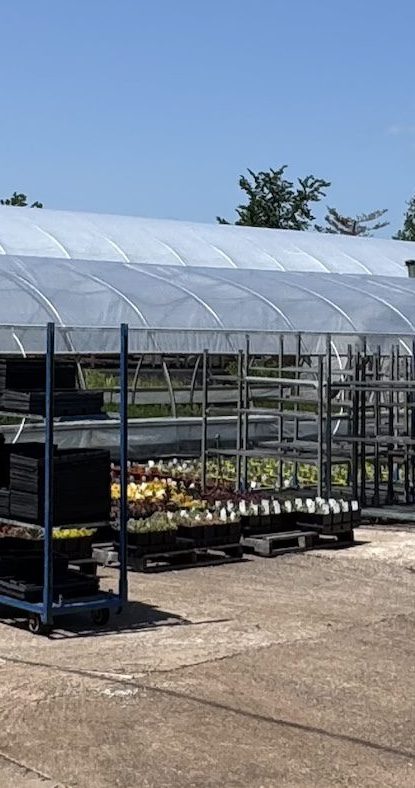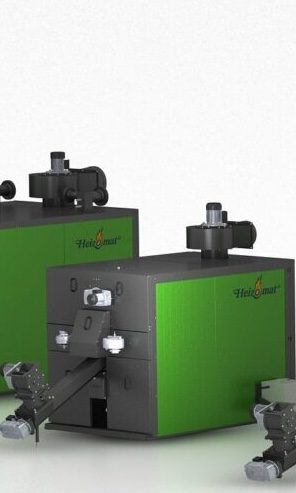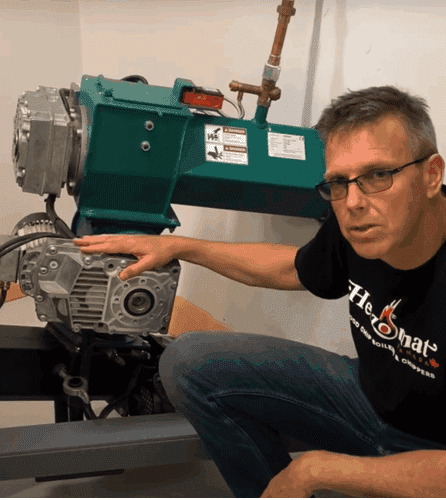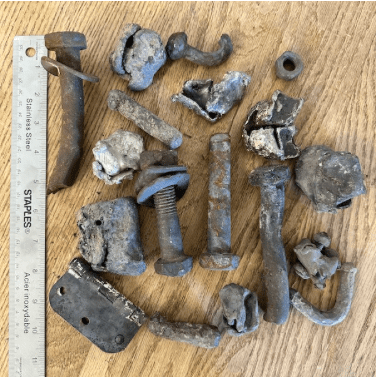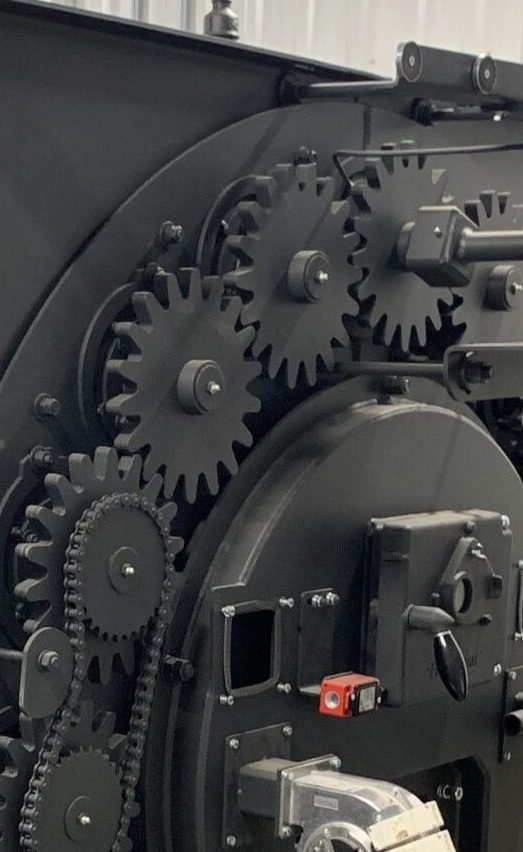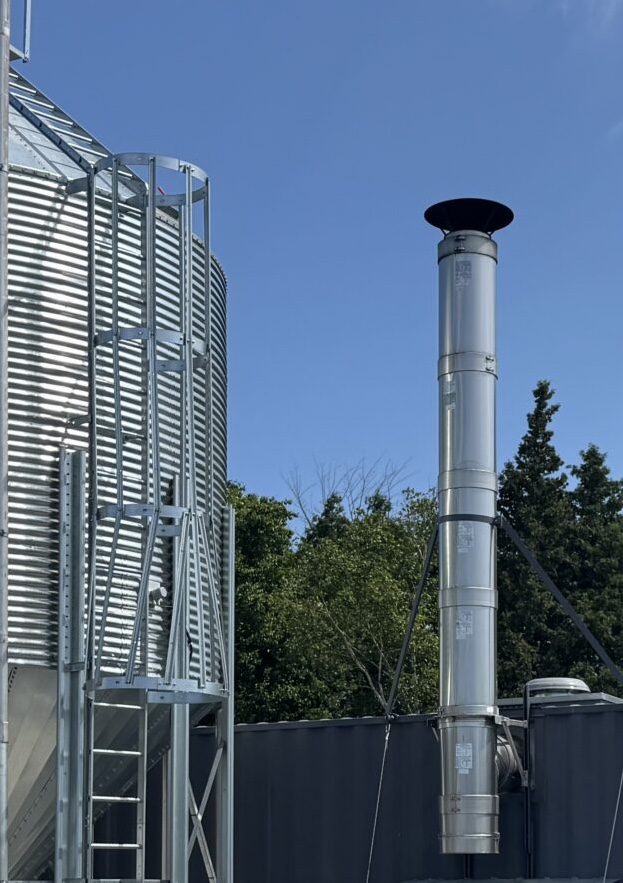5 tips for a Truly Hands Off Biomass Boiler
It’s not just the Low Fuel Costs and Planet Friendly Nature of Woodchip and Biomass Heating that make it Attractive…
It’s also the Automated Convenience.
No longer do you have to brave blizzards and break your back handling 4′ logs three times a day, fiddling with a fussy boiler and spending hours cleaning it, just to cut heating costs.
All of that can be automated, and with some careful forethought, you can go an entire month or longer without having to think about heating.
Here are a few tips to help you achieve that goal.
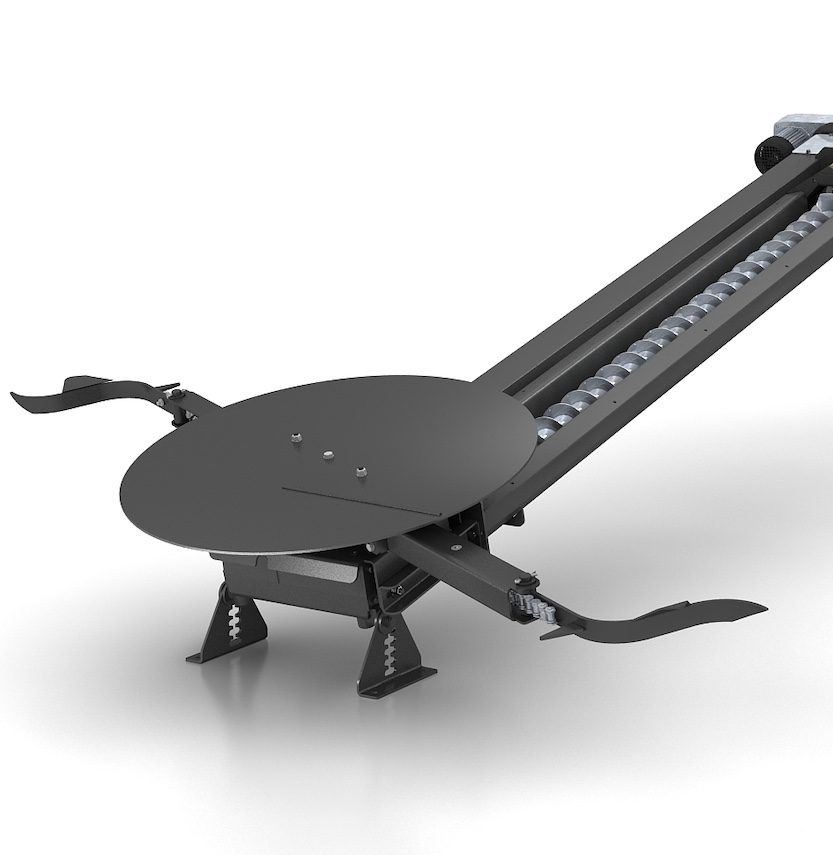
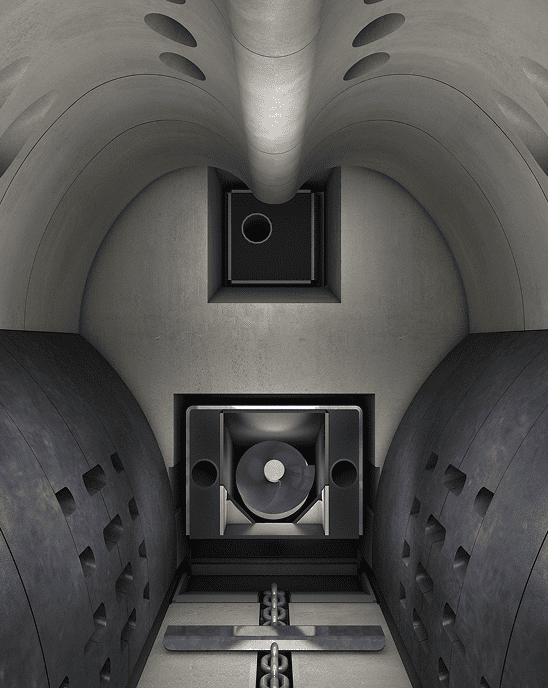
1. Buy a Good Boiler (or Perfect Wood Chip)
Okay, you’d be right in saying that we are a little biased on this point (given that we obviously sell one of the best biomass boilers out there), but we’ve also heard some stories of endless frustration from customers of lower quality systems.
As with most products, there are different quality levels. The higher quality you go, the less problems you will have, the less fixing you will do and the longer it will last.
For example, in a low-quality boiler, a single piece of oversized fuel could jam the feed system or poor quality fuel could play havoc with the ash removal and the heat exchangers. Both of these are time consuming issues to resolve and frustrating if they happen on a regular basis.
If your preference is to minimize equipment costs, then make sure that you use quality fuel that is the right size (produced by a screened wood chipper designed for biomass.)
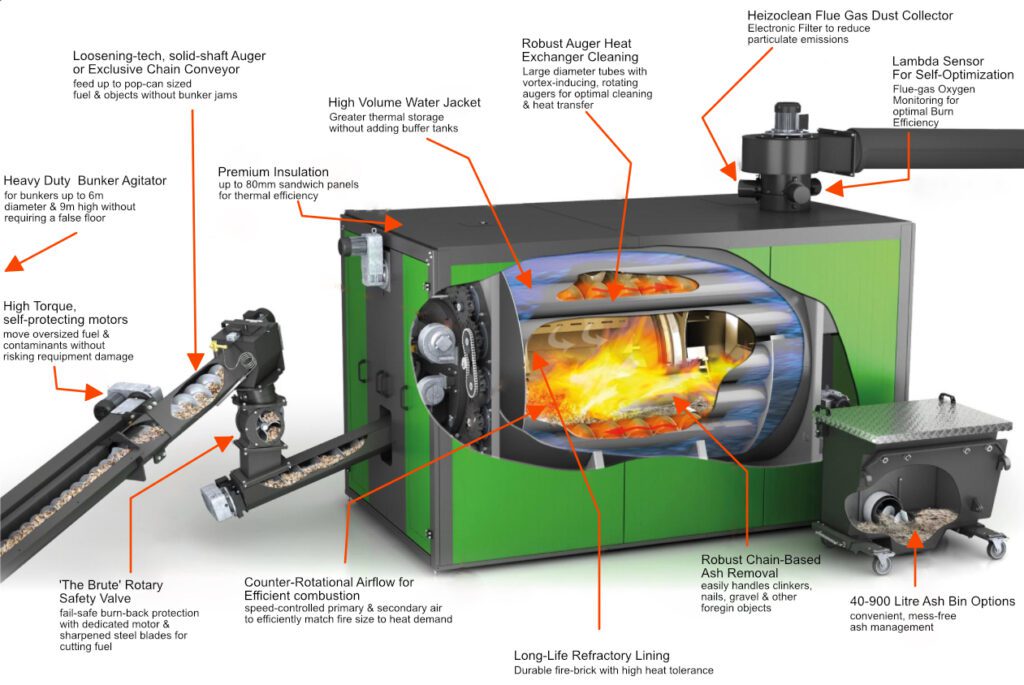
Here are a Few Features of Quality Boilers that Help Minimize Issues:
A Solid Feed System
Bigger augers and stronger motors allow you to handle larger fuel and contaminants with less likelihood of a jam in your bunker. If your fuel might be oversized or contaminated (bolts, gravel etc.) and you’d like to avoid the fun of bunker diving (read dig out your fuel to the bottom of the bunker to find the jam), then upgrade to a larger auger or go with a chain fed system. You will thank me later.
Reliable Fire Detection
The boiler needs to be able to monitor whether there is a fire in the firebox and to stop the fuel supply if the fire goes out. We have heard of boilers – without this feature – jamming their fireboxes solid, full of fuel and breaking the feed auger. This fire detection feature should be standard on any good boiler. In addition, a feature to protect all motors from over working or over heating is a great benefit for low cost operation and the longevity of your system.
A Robust Ash Removal System
Clean wood chips will work with most ash systems but if you are burning non-wood biomass that forms clinkers(hard molten ash rocks) or have even small amounts of gravel, metal or contaminants in your fuel, then you need a robust ash system designed for the job – cue shameless promotion of Heizomat’s heavy duty ash chain.
2. Set up Remote Monitoring and Alarms
Being able to view your boiler on your phone and receive alarms if there is an issue while you are offsite is essential if you want a truly hands-off experience. All good boilers offer this ability but not all owners actually set it up. Check with your preferred supplier for an app that allows you to connect to your boiler from any of your devices.
It should be easy to connect your boiler to any existing internet network, to a new dedicated internet service or to an internet service that uses the cellular network.
And, as an added advantage, at Heizomat Canada, we use the remote connection to proactively monitor our customer’s boilers, support them with training and fine tuning.
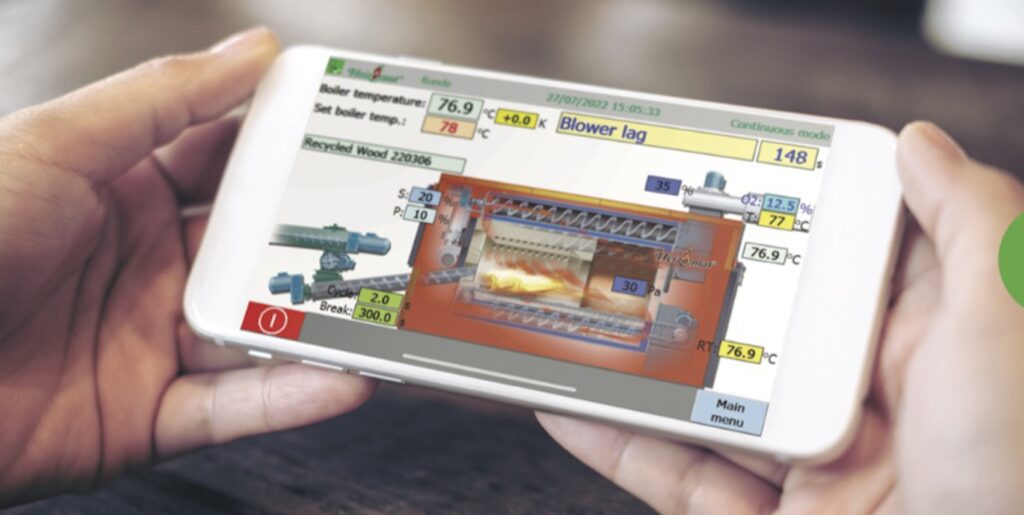
3. Build the Right Fuel Bunker
Think of your fuel bunker like the tank on a propane system. Filling the bunker is (or should be) where the most labour is required, so planning it well pays big dividends. Here are some tips:
Vent the moisture – there will always be some moisture in your fuel so we highly recommend some natural ventilation to carry away moisture build up.
Right size your bunker – the larger the bunker the less often you will have to fill it and the taller it can be without bridging issues. If your fuel is being delivered and you don’t have separate storage for it then make sure the bunker is big enough to take the full load plus at least 25% more.
Filling from the top is best – filling the bunker from one side with a loader is easy but you will never get the bunker completely full (even with a zoom boom). A system that fills from the top means a full bunker every time and can be as fancy as one of our purpose built loading systems or as simple as an old forage blower. Chipping directly into the bunker is also a great way to fill from the top. Just make sure you design for it.
Plan for the jam – it may never happen, but if you get a jam and don’t have a way to empty your bunker, it’s a major problem. The solution is as simple as installing doors in one bunker wall with a removeable wall inside of them. See picture.
Easy monitoring – having an easy way to check the fuel level in the bunker is ideal. In this case an old school access hatch is hard to beat as fancy sensors don’t fare so well in such a dusty, harsh environment. A wifi camera is another great low cost solution.
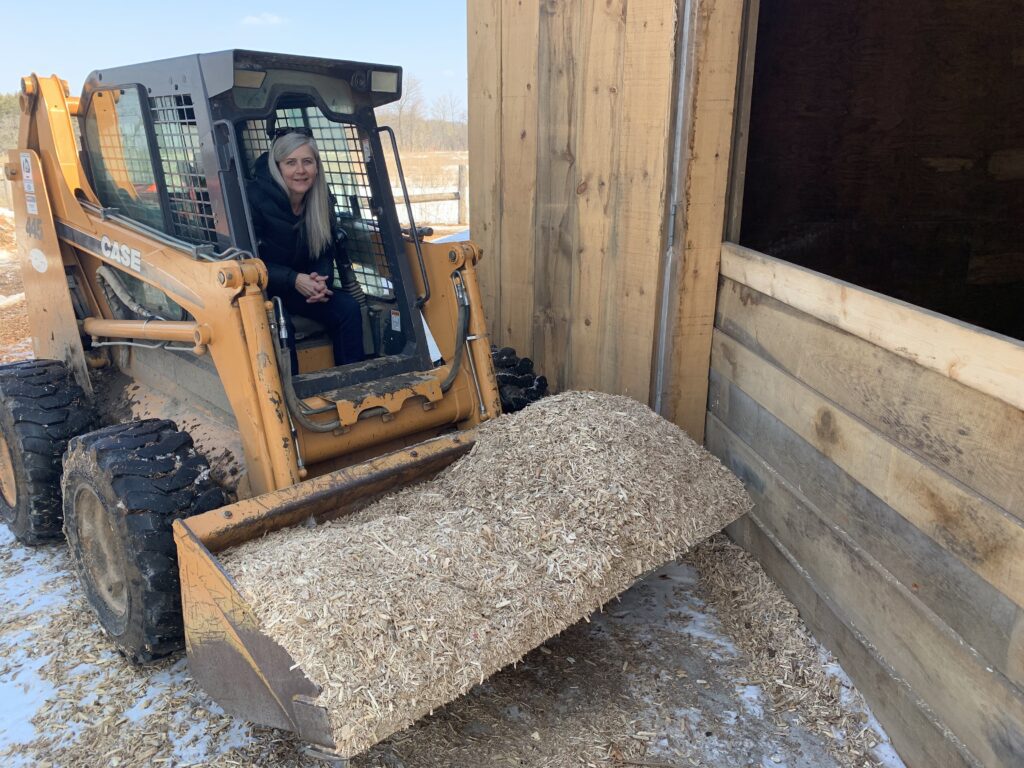
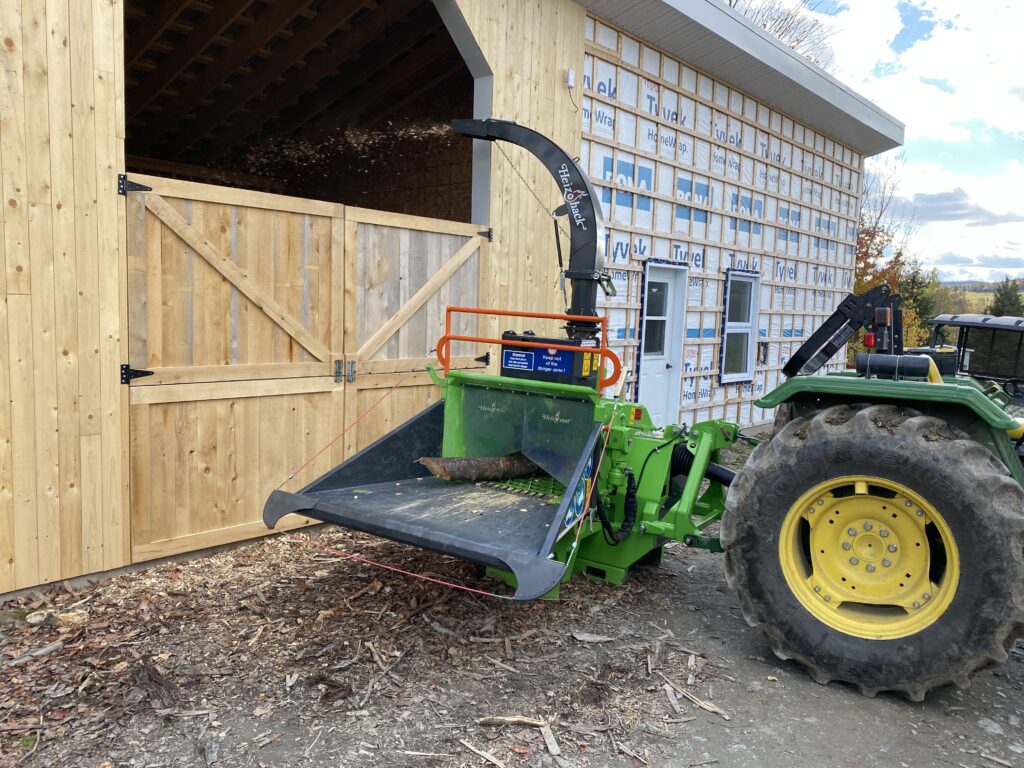
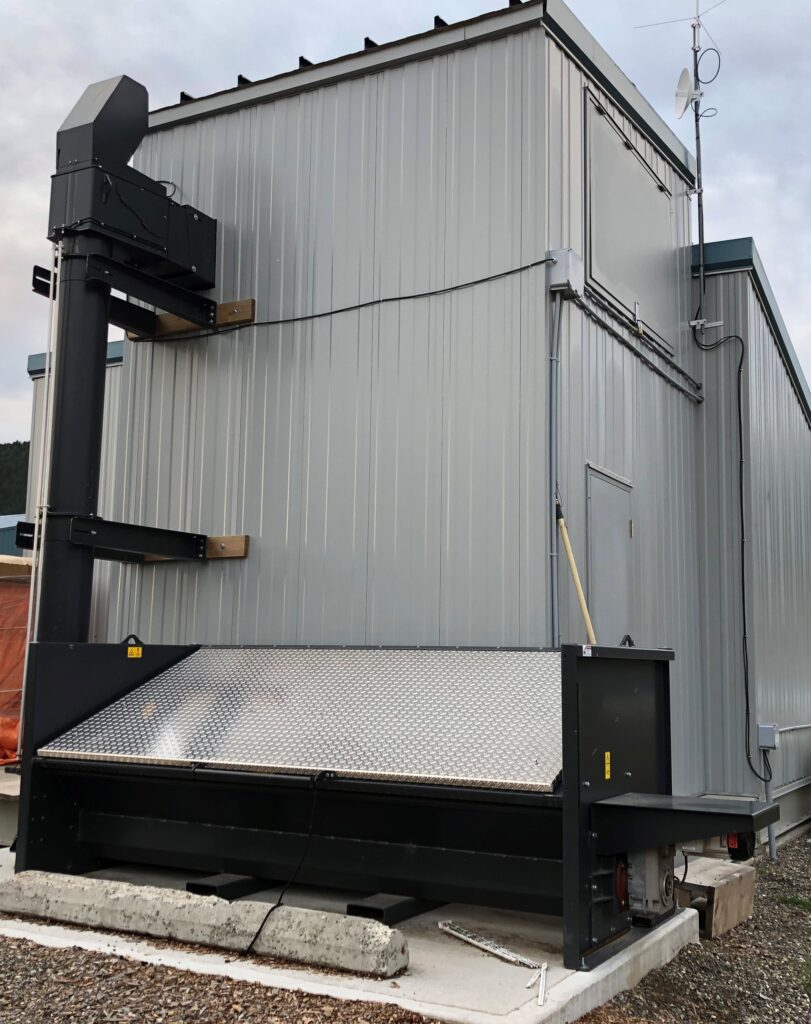
4. Get Smart About Ash Management
While good biomass boilers produce very little ash and automatically remove it, the ash bin still needs to be emptied.
Here are a few tips on making ash management as painless as possible:
Shutdown Cleaning – at the end of the season make sure you do a full ash system cleaning by running the ash removal system for an extended period and emptying the ash bin. It’s much easier to manage the ash when it is fresh rather than after a humid summer.
Go big – larger ash bins are built stronger so they last longer and also need to be emptied less often. Just be sure to plan your dumping location and how to get the bin there easily.
Get it outside – if it’s feasible, locating the ash bin in a weather protected area outside keeps the boiler room cleaner and allows you to have a larger ash bin with a loader attachment for easier disposal.
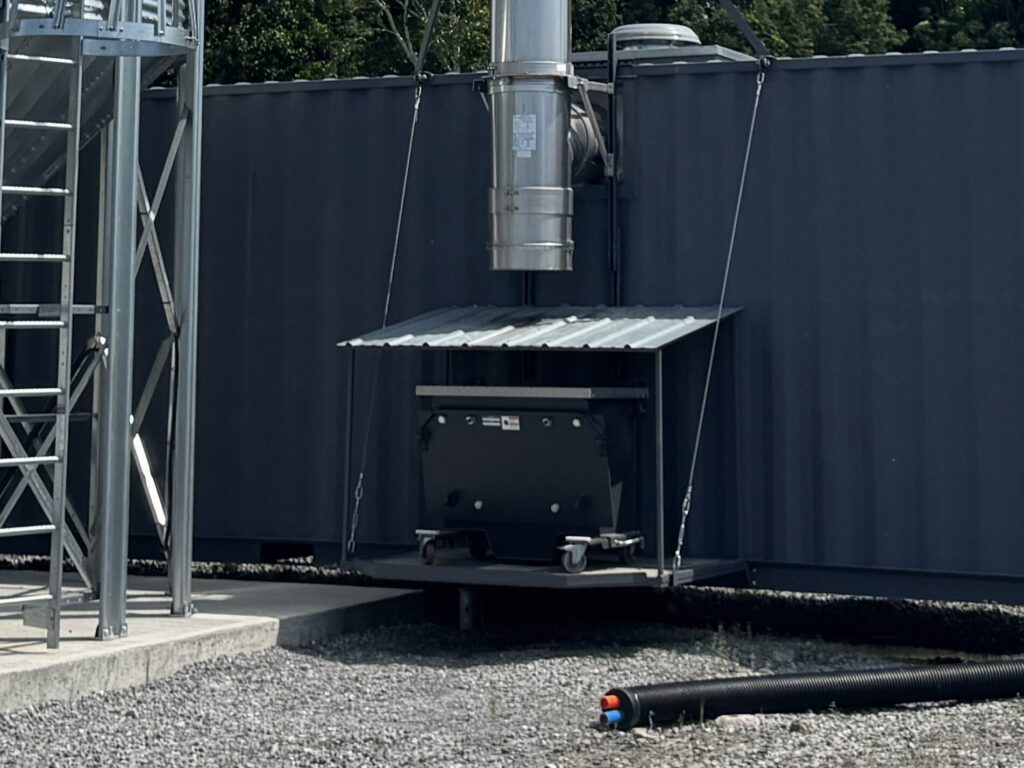
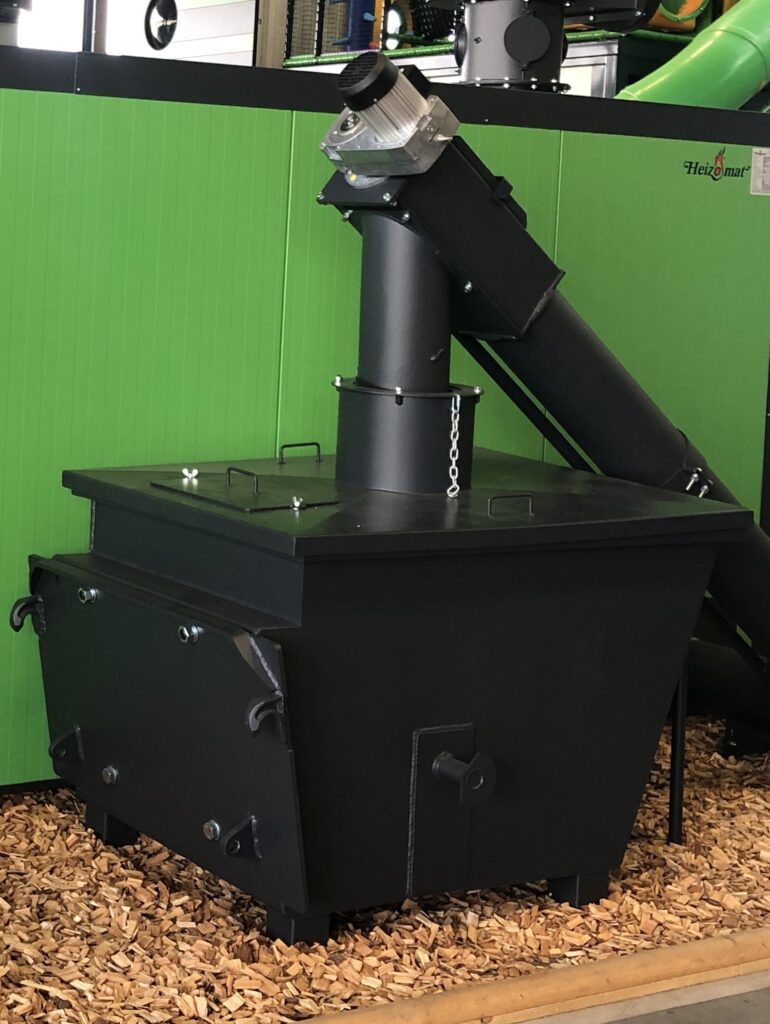
5. Protect Your Investment
Every good boiler has a long list of safety features to keep your buildings and operators safe. Here are a few additional recommendations for protecting your investment in your boiler and plumbing system:
- Return Temperature Control: Firebox condensation can degrade fire bricks faster and increase corrosion. A simple temperature-controlled mixing valve or pump can ad hot supply water to the cold return water to prevent a cold firebox and significantly reduce condensation, prolonging the life of the boiler.
- Low Water Cutoff: This simple device causes an alarm and shuts the boiler down if the water level gets too low. This is a low-cost insurance that not only protects your boiler but also your pumps.
- High Pressure Cutoff: All closed plumbing systems require a mechanical pressure relief valve but it does not notify you of a problem if it is activated. Adding a high-pressure cutoff provides an additional layer of protection that will cause an alarm and sht the boiler down if the pressure gets close to the relief valve settings.
- Preventative Maintenance: Biomass Boilers require minimal maintenance, but if it isn’t done then you run the risk of reduced performance, increased wear, reduced life and in a worst case scenario, chimney fires. Following the manufacturer recommended maintenance shouldn’t take a lot of work and is guaranteed to save you time, money and hassles in the long run.
Want to Know More?
Take a Virtual Tour of a Working Boiler
We take you on a tour of a working boiler system from feed system and bunker to the safety features, ash removal system and provide plenty of tips and information on ownership and maintenance.



